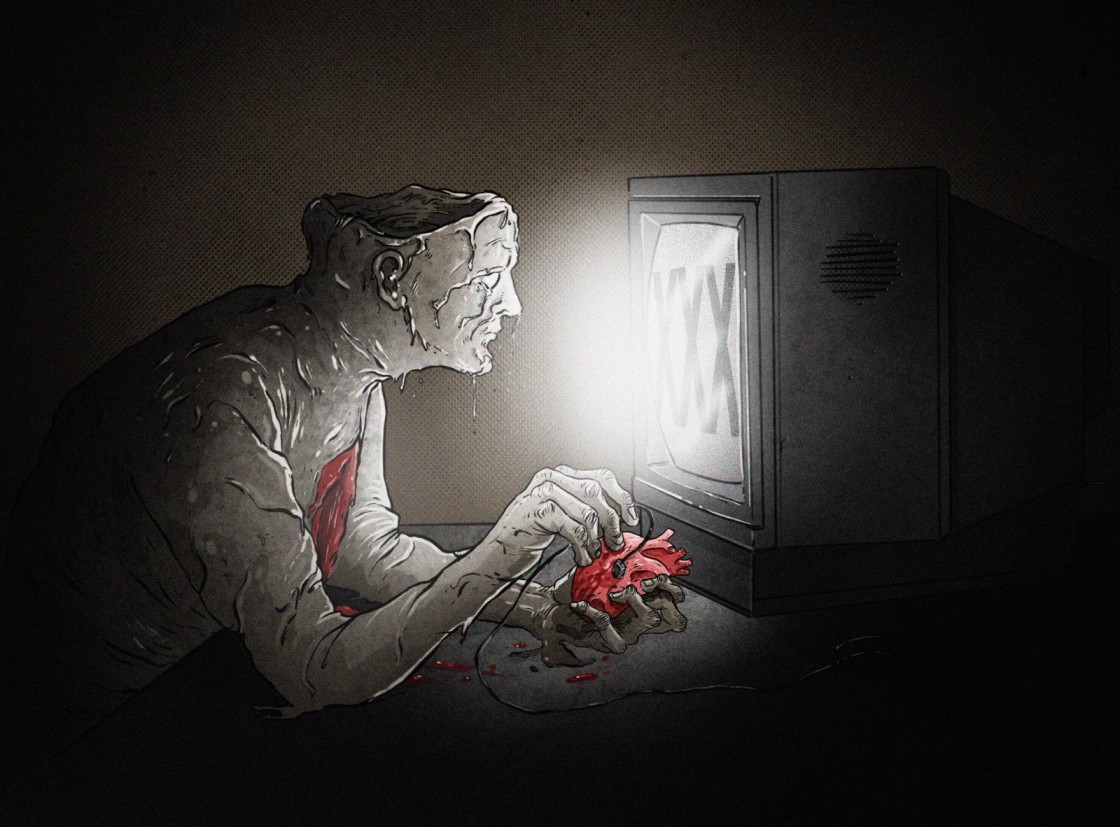
India, the birthplace of the Kamasutra, has long embraced the celebration of love, intimacy, and sensuality. Its ancient temples, adorned with intricate erotic sculptures, stand as timeless testaments to a culture that once viewed pleasure as an essential and natural part of life. However, in contemporary times, this rich legacy has been overshadowed by layers of colonial morality and Victorian-era prudishness, leaving behind a society burdened with shame-inducing myths and restrictive taboos. The once-open discourse around sexuality has been replaced with hushed whispers, legal ambiguities, and a cultural hesitancy to embrace what was once openly revered.
Looking Back
Sex toys have been around for centuries, long before modern perceptions turned them into taboo topics. As early as 3rd century Greece, the first recorded use of a dildo, known as an olisbos, was documented—these were sold by merchants and widely accepted in society. By the Renaissance era in Italy, the olisbos evolved into what we now recognize as the dildo, possibly derived from the Italian word diletto, meaning “to delight.” The development of rubber dildos, similar to those used today, can be traced back to the mid-19th century.
Even ancient Indian texts acknowledged the role of sexual pleasure. Vatsyayana, the author of the Kamasutra, emphasized that if a man could not satisfy his spouse, it was his responsibility to use alternative methods or objects to help her achieve pleasure. Renowned sexologist Dr. Prakash Kothari further highlights that sex toys were referenced in the Kamasutra, particularly in the mention of the inflated sex dolls, akin to modern-day versions.
The ambiguity that surrounds Sex Toys

Until recently, the common belief was that adult toys were considered unconventional or for someone of low status — often seen as a novelty present for bachelorette parties or as a joke to humiliate a friend. Toys are not often used by those in a satisfying relationship. There is no legislation in India that prohibits the sale or purchase of pleasure items. Due to outdated colonial period rules about obscenity, things cannot be packaged or promoted in a manner that is deemed obscene.
India’s legal fight against sex toys and their commercialization shows no signs of weakening. India’s patent office denied a Canadian company’s request to secure a patent on a vibrator due to the belief that sex toys go against “public order and morality.” Standard Innovation Corporation filed a patent application for their “we vibe” product in April 2018. The intention was to discourage imitators in the area from employing its U-shaped gadget.
The Indian patent office denied the application, seeing sex toys as vulgar products and showing a lack of interest in the concept of sexual pleasure. The patent office said that these toys are not deemed useful or beneficial. These are deemed morally degrading by the law.
Sex toys are prohibited in India according to Section 292 of the Indian Penal Code. Despite the patent office and the law’s authoritative stance, sex toys are gaining popularity in India. India used to be reserved about discussing sex due to the influence of colonial control and Victorian values. Today, there is a noticeable shift in conduct within Indian culture, particularly among the younger demographic, indicating shifting views about sex and sex toys.
The Discussion around Obscenity of Sex Toys
Section 292 of the Indian Penal Code (IPC) says that lewd information can’t be sold, given away, or shown in public. People have different ideas about what “obscenity” means in this situation, so there are different views on whether sex toys are obscenity. However, the interpretations differ.
Section 294 of the Bhartiya Nyaya Sanhita (formerly the Indian Penal Code) is what people mean when they ask, “Are sex toys or vibrators illegal?” This part says it’s against the law to sell or promote any kind of offensive “art, literature, or other objects.” The rule makes it clear that it refers to art and writing material, but the word “object” seems to cause misunderstanding. When used in this way, the word “object” does not mean a vibrator or a sex toy. It sounds like the word “object” here refers to a thing like a picture or a piece of writing. In a formal sense, it is allowed to sell things like sex toys, vibrators, and flashlights.
Indian Courts have interpreted the phrase throughout time. The courts adhere to the Hicklin Test to determine what is considered obscene. As per the exam, the standard for obscenity is determined by whether the material in question has the potential to corrupt and degrade those who are susceptible to such immoral influences and may come across such a production. Individual perceptions of obscenity vary, however many sex toy websites have age limits of 21+ to protect individuals, especially youngsters, from corrupt influences.
Senior police inspector Ashok Kadam said that Indian law forbids the import and selling of such toys. Roy has been charged under sections 292 and 293 of the Indian Penal Code for selling indecent publications and artefacts to young people. Police state that adult commodities are prohibited in India, however legal experts have conflicting opinions on the matter.
Sections 292 and 293 of Indian law address the selling of indecent literature and artefacts to young people. Advocate Ameya Dange said that any goods or sex toys are lawful in India as long as they are not shown or advertised in an indecent way. Dange also said that Indian laws acknowledge the right to privacy of Indian individuals. He said that one’s choice of sexual fulfilment in private with adult items or sex toys is a personal matter and should not concern others.
In 2011, the Calcutta High Court declared in the matter of Kavita Phumbhra v. Commissioner of Customs (Port) that an object should not be deemed indecent solely because it arouses sexual urges. Sex toys are permitted for sale in India if they comply with the laws regarding their presentation and packing as stated in the IPC.
Flipkart, like to Amazon and other major merchants, takes a cautious approach. The company sells items like vibrators, dildos, and scented lubricants categorised as “health and personal care” goods.
Courts determine the legality of a sex toy based on whether the advertising influenced consumers to purchase it with a morally corrupt attitude. However, others say that the existence of sex toys is justified by the dread of immoral and sexual activity.
IMbesharam is a US corporation that sells sexual toys in India via its e-commerce platform and multi-brand, striving to be recognised as the ‘Merchants of Kama Sutra’. It also distributes its products via various online retail platforms. Until recently, the adult lifestyle goods industry was confined to disreputable areas in major cities. The firm has expanded and is now valued at Rs 1,500 crore. The legislation in India regarding the commercial distribution of sexual paraphernalia is ambiguous.
Typically, the worry pertains to the marketing strategies used for these items, which include displaying suggestive images and detailed explanations.Various goods are now available for purchase in both conventional shops and department stores. The audience’s perspective has shifted, now viewing specific enjoyment items as part of the fast-moving consumer products category. Stores are offering things to improve or supplement sexual activities, reflecting the diversity in sexual lifestyle present in our civilisation from ancient times, as shown in the temples of Khajuraho.
Sex Toys are gaining Popularity in India

India ranks sixth globally in sexual activity but has relatively low sales of sex toys. As more daring businesses get into the sex toy industry, Indian consumers who used to purchase these products in specific locations in Delhi or Mumbai or when travelling overseas are increasingly opting to buy them online.
Nevertheless, there is a significant disparity in the purchasing of sex items between men and women. Analysed data from over 80,000 purchases by ThatsPersonal, a sexual health goods retailer, revealed that 62% of buyers are male and 38% are female. Intimate massagers were the top-selling sex goods for women. Men’s preferred product seems to be lubricants. Indians also purchase delay sprays, seductive lingerie, pleasure rings, condoms, and ‘sexcitement’ creams as sex items.
Women from Punjab ranked first in India for purchasing sexual items in the last year. Contrary to the national trend, ladies from this state prefer to purchase arousal oils rather than intimate massagers. The largest quantity of ‘sexcitement items’ was purchased by women from Punjab.
During Navaratri, Gujarat becomes three times more lively with the nine straight days of clanking daandiya sticks. Sales of sexual items, including condoms, increase during this period. Items like as erotic games, edible lingerie, edible body paints, and pleasure rings are popular during Navaratri. Smaller towns in Gujarat such as Rajkot, Baroda, and Bhuj have a preference for lubricants, adult games, penis pumps, seductive lingerie, and personal massagers.
Female purchasers in Baroda surpass those in any other cities. Women in Baroda purchase 53% of the sex items offered in the area. Bhopal is known for its innovative approach of purchasing scented condoms. 28% of purchases in Bhopal are made by female purchasers. Uttar Pradesh bought the most quantity of penis enhancement goods in the last year. The highest number of BDSM goods are purchased by individuals in Assam.
Innovations in the Field
Businesses have recently developed products aimed at couples in long-distance relationships, although not exclusively for them. The products are internet-connected sex toys capable of vibrating and controlled remotely using a computer programme or smartphone app. These devices are classified as “teledildonics” under the internet of things (IoT). The Lovense Lush, We-Vibe Sync, and Ohmibod Panty Vibe are the top three popular IoT sex toys.
Most of these toys have Bluetooth connectivity, can sync with a smartphone, and can be controlled remotely using an app. These sex toys designed for couples only permit the app user, usually a man, to dictate the stimuli provided to the individual who is using the sex toy. The wearer receives no other sexual stimuli apart from the visual feedback of the woman experiencing pleasure. Utilising products and services designed for long-distance relationships may be beneficial for those with spinal cord injuries and other restrictions.
Individuals, regardless of limitations, may benefit from using a teledildonic device. A person with limited arm movement may use a smartphone to operate a sex toy and engage in self-stimulation using teledildonic devices. A “Sex Robot” might be defined as an artificial entity designed for sexual behaviours, such as sexual stimulation and fulfilment. The sex robot must also fulfil the following prerequisites: a) Humanoid form: It is designed to have a physical appearance similar to that of a human; b) Human-like movement and behaviour: It is programmed to move and behave in a way that imitates human actions; c) Some degree of artificial intelligence: It is capable of understanding and responding to data in its surroundings. A sex robot may distinguish itself from other robots, such as industrial robots, by meeting certain criteria.
Sex robots may be seen as a feasible technology for human contact, especially when considering the sexuality of those with impairments. Individuals with significant physical and intellectual disabilities, along with many elderly individuals with neurodegenerative diseases, need assistance to meet their sexual needs. Ezio Di Nucci, author of “Robot Sex: Social and Ethical Implications,” explores the sexual rights of those with disabilities and the potential benefits of sex robots for them. Sophisticated sex robots may aid disabled individuals in achieving sexual pleasure when they are unable to find a willing spouse or sexual carer. An unregulated market may negatively impact health, especially for youngsters.
Concluding the Discussion

India is often associated with the Kamasutra, and its people are known for being sexually uninhibited. In the 21st century, the emerging morality is more subjective and personalised. It is not strictly limited by marriage, respects the idea of consent, and includes inherent pleasure.
The right to sexual privacy is a fundamental component of the right to privacy. The law should not interfere with the private actions of consenting people. Legal control is necessary when the actions are not consensual. Minors may be forbidden from using sex toys for health reasons. Non-consensual use of such gadgets by adults is illegal under Section 376 and Section 377 of the IPC.
To avoid legal issues, it is important to carefully analyse how sex toys are shown, described, and ensure compliance with obscenity and indecent regulations. Sellers and e-commerce platforms should be cautious, watchful, and thorough when handling things that may be considered obscene, since the legal criteria for obscenity are subjective.
Submitted by Shibala Singh, pursuing B.A.LL.B. (Hons.) from National University of Study and Research in Law, Ranchi.